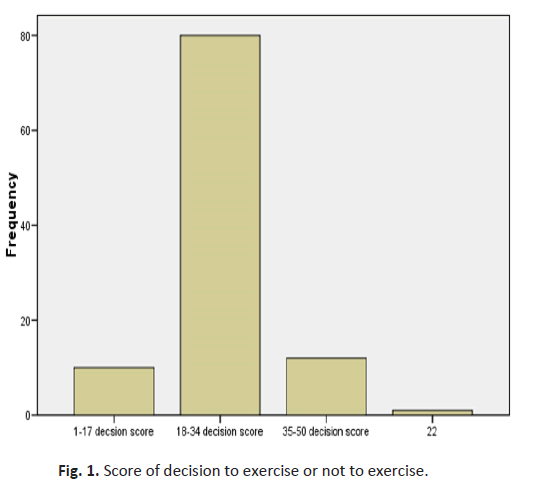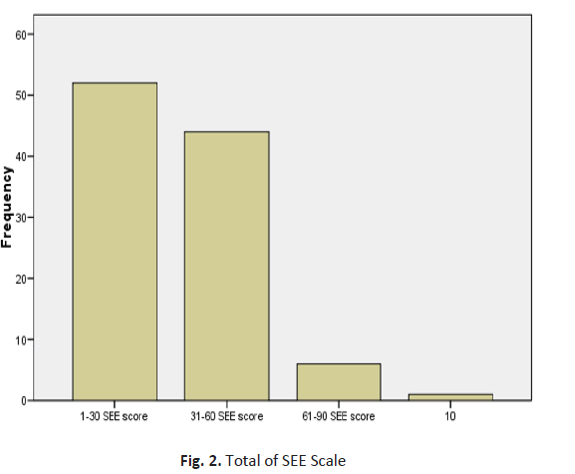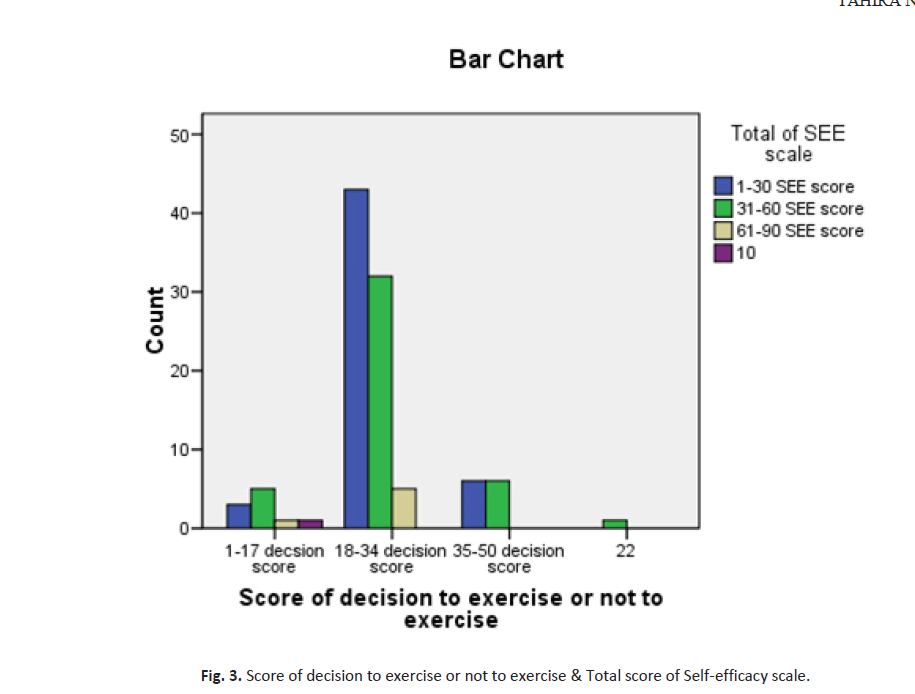Factors affecting stages of exercise behavior change among students
Received: 02-Mar-2021, Manuscript No. jotsrr-23-25621; Editor assigned: 05-Mar-2021, Pre QC No. jotsrr-23-25621(PQ); Accepted Date: Jun 06, 2023 ; Reviewed: 19-Mar-2021 QC No. jotsrr-23-25621 (Q); Revised: 09-May-2023, Manuscript No. jotsrr-23-25621(R); Published: 09-Jun-2023
This open-access article is distributed under the terms of the Creative Commons Attribution Non-Commercial License (CC BY-NC) (http://creativecommons.org/licenses/by-nc/4.0/), which permits reuse, distribution and reproduction of the article, provided that the original work is properly cited and the reuse is restricted to noncommercial purposes. For commercial reuse, contact reprints@pulsus.com
Abstract
Introduction: The term physical activity is complicated, and intricate action, this is affecting overall health of human being that’s why it is hard to evaluate and everyone perception of being physically active is different. The Trans-theoretical model is encompassing the stages through which we can analyze person’s stage of exercise behavior change (Pre-contemplation, contemplation, preparation, action and maintenance). There is also self-efficacy and decisional balance which are affecting the exercise behaviour change stages. It is effectively described in previous studies that the person who have active lifestyle have spending good quality of life and the person who have inactive lifestyle then they spending their life in different diseases, being physically active made allot of health related factors work well and prevent person from long lasting and life threatening diseases.
Objective: To identify the factors affecting exercise behavior change among students.
Methodology: The descriptive cross-sectional study was conducted with a sample of 103 undergraduate physiotherapy students from different government and private institutes of physiotherapy Karachi, Pakistan, Sindh. Non probability convenience sampling technique was used to collect the data. Written informed consent was taken from all participants prior to study. Three questionnaires were used to collect the data including stage of change questionnaire for exercise, self-efficacy questionnaire and decisional balance questionnaire.
Results: Results shows that out of 100 students 58.3% is on active stage, whereas 24.3% were on preparation stage, though 8.7% was on contemplation, and 7.8% were on precontemplation and maintenance. In this study decision to do exercise percentage is on moderate level 77.7% students are intend to exercise or they are on active stage. In this study the self-efficacy among students towards exercise is on low level.
Conclusion: This cross-sectional study concluded that self-efficacy is motivator factor in change in exercise behavior but it depends on individual own perception towards exercise. It is also important that if the behavior change is on good stage then there should be optimum level of resources to stay on that stage and maintain it as much as possible.
Keywords
Clinical outcome, Intradural extramedullary tumors, Spinal tumors, Surgical excision, COVID pandemic, Neurological evaluation
Introduction
The Effects of daily exercise for both adults and younger people are countless. If we talk about the young generation the evidence provides strong base that physical activity maintains the integrity of musculoskeletal system, cardiopulmonary system, and also it plays important role in weight, trans-theoretical model is a programmed representation that centres on the decision making capabilities of single person, it talks about the over-all change process, stages, and self-efficacy rather than to talk about the environmental effects and nature phenomena bring change on individual’s behavior [1]. The Trans-theoretical model gives the strong base to the concept of behaviour change stages its help in determine the factors that affect the behaviour of individual towards exercise [2]. The exemplary Transtheoretical is encompassingthe stages through which we can analyse person’s stage of exercise behaviour change:
• Pre-contemplation (people are lazy and do not plan to begin exercise within the next six months)
• Contemplation (those are inactive and are considering commencing exercise within the next six months)
• Preparation (persons exercise onunbalanced basis but expect to become more active within the subsequent month)
• Action (people have engaged in consistent exercise for less than six months)
• Maintenance (individuals have tied up in regular exercise for six months or more)
Dissimilar behavioural arrays are distinctive in five stages separately [3]. These differences benefits to discover reasons that persons move forward among these stages. Furthermore, it was suggested that stage definite interventions are more effective than undefined interventions [4]. Decisional Stability shows the person’s capability to analyse the positive aspects (pros) and negative aspects (cons) of changing a new behaviour, persons who are on the stage of action and maintenance prone to have decisional balance favouring the positive aspects (pros) of behaviour While the starting stage pre-contemplation and contemplation prone to have more costs (cons) of behaviour than benefits. In the action stage, the cost (cons) and benefits (pros) of behaviour are in balance [5].
The investigation by Korea centre for disease control and prevention have studied that the proportion of students who do daily exercises start moderately to intense is approximately 18.3% and most of the undergraduate did not involve their selves in exercise [6]. It is also found that 74.4% of student takes part in exercises partially or did not participate in exercise at all [7]. It is also concluding that only 14% approximate student take part exercises.
There is drastic good impact on cardiopulmonary patient, diabetic patients, hypertensive of daily exercise they become active and able to perform ADL’s effectively [8]. A recent national health committee report recommends that work out is strongest way of enhancing the well-being of life and decrease the expenses on health and enhance the functional capacity of every individual. There are allot of evidence which support that regular physical activity or exercise plays a very important role to enhance life style and also reduce weight. In 2014, a study was conducted about factors related to stage of exercise behaviour change among university students based on Transtheoretical model. They found that by taking relevant interventions person can change their physical activity or exercise behaviour change
[9].
In 2013, the study was conducted about Assessing stages of exercise behaviour change, self-efficacy and decisional balance in Iranian nursing and midwifery students. Their investigation shows that a large number of students were immobile and also conclude that by making influential strategies to make them physical. The main objective of this study is to identify the factors affecting exercise behaviour change among students. Literature suggest that there is no research done in Pakistan by which we evaluate the exercise behaviour change and selfefficacy towards exercise and decisional balance level on exercise behaviour change [10].
Materials and Methods
The descriptive cross-sectional study was conducted with a sample of 103 undergraduate physiotherapy students from different government and private institutes of physiotherapy Karachi, Pakistan, Sindh. Non probability convenience sampling technique was used to collect the data with the inclusion criteria as Undergraduate DPT students having age 18-24, including males and females. Written informed consent was taken from all participants prior to study [11].
Three questionnaires were used to collect the data including Stage of change questionnaire for exercise, self-efficacy questionnaire and decisional balance questionnaire. Data was analyzed through SPSS version 21.0, multiple logistic regression analysis was used [12].
Results
Table 1 and Figure 1 shows that among 103 students Decisional balance scale shows, 9.7% students have decided not to exercise, 77.7% moderately decide to exercise, 11.7% decide to exercise properly [13]. Table 2 and Figure 2 shows that among all the students
50.5% have moderate self-efficacy, whereas 42.7% students have low self-efficacy, 5.8% student have high self-efficacy. Table 3 and Figure 3 shows that after cross tabulation of decisional balance score and selfefficacy score the results shows that self-efficacy of students towards
exercise is on moderate level (Tables 1 - 3 and Fig. 1-3) [14].
| Variables | Frequency | Percent | Valid percent | Cumulative percent | |
|---|---|---|---|---|---|
| Valid | 1-17 decision score | 10 | 9.7 | 9.7 | 9.7 |
| 18-34 decision score | 80 | 77.7 | 77.7 | 87.4 | |
| 35-50 decision score | 12 | 11.7 | 11.7 | 99 | |
| 22 | 1 | 1 | 1 | 100 | |
| Total | 103 | 100 | 100 | - | |
Table 1. Score of decision to exercise or not to exercise.
| Variables | Frequency | Percent | Valid percent | Cumulative percent | |
|---|---|---|---|---|---|
| Valid | 1-30 SEE score | 52 | 50.5 | 50.5 | 50.5 |
| 31-60 SEE score | 44 | 42.7 | 42.7 | 93.2 | |
| 61-90 SEE score | 6 | 5.8 | 5.8 | 99 | |
| 10 | 1 | 1 | 1 | 100 | |
| Total | 103 | 100 | 100 | - | |
Table 2. Total of SEE scale.
| Variables | Total of SEE scale | Total | ||||
|---|---|---|---|---|---|---|
| 1-30 SEE score | 31-60 SEE score | 61-90 SEE score | 10 | 1-30 SEE score | ||
| Score of decision to exercise or not to exercise | 1-17 decision score | 3 | 5 | 1 | 1 | 10 |
| 18-34 decision score | 43 | 32 | 5 | 0 | 80 | |
| 35-50 decision score | 6 | 6 | 0 | 0 | 12 | |
| 22 | 0 | 1 | 0 | 0 | 1 | |
| Total | 52 | 44 | 6 | 1 | 103 | |
Table 3. Score of decision to exercise or not to exercise * Total of SEE scale cross tabulation Count.
Discussion
There is very immediate virtuous influence of exercise or physicalactivity on cardio-pulmonary patient, diabetic patients, hypertensive of regular exercise they become active and able to perform ADL’s excellently. The Effects of daily exercise for mutually grown person and fresher people are uncountable the evidence provides strong base that physical activity upholds the integrity of musculo-skeletal system, cardio-pulmonary system, and also it plays vital role in weight-loss.
The Trans-theoretical model gives the sturdy base to the idea of behaviour change stages its help in analyse the factors that affect the behaviour of individual towards exercise. Stages of exercise behaviour change includes pre-contemplation, contemplation, preparation, action, maintenance. It helps to find out the person’s competence to handle with serious situation with operative approaches. Bandura's selfefficacy theory introduced this concept of self-efficacy, decisional steadiness demonstrates the person’s capability to investigate the positive aspects (pros) and negative aspects (cons) of altering a new behaviour.
In this study results show that active stage was highest at 58.3%, on the other hand, 24.3% were on preparation stage, though 8.7% was on contemplation and 7.8% were on precontemplation and maintenance. In the previous study on 2014, according to the stage of exercise behaviour change, results show that contemplation stage was highest at 37%, whereas the percentage of those in the preparation stage at 27%, though the percentage of those in the precontemplation stage at 16.2%, while the percentage of those in the action stage at 13.6% and the percentage of those in the maintenance stage at 6.2%. The percentage of those in the action and maintenance stages who actually performed exercise was 19.8%. Also in another study the results show 38.6% in the active stage, but in this study the percentage increases 58.3% in active stage.
In this study decision to do exercise percentage is on moderate level 77.7% students are intend to exercise or they are on active stage. Stage of exercise behaviour change influenced decision of exercise more than decision of exercise influenced stage of exercise behaviour change. In this study the self-efficacy among students towards exercise is on low level. The result of comparison showed that self-efficacy significantly increased as it progressed from precontemplation through the stages of contemplation, preparation, action and maintenance. Selfefficacy also increased as stage of change progressed from precontemplation to maintenance and in decisional balance, while the mean score of maintenance was the highest in the positive attitude differences toward exercise.
Conclusion
The study was conducted to find out the factors that affect the stages of exercise behaviour change in which factor include decisional balance and self-efficacy. The study results conclude that self-efficacy is motivator factor in change in exercise behaviour but it depends on individual own perception towards exercise. It is also important that if the behaviour change is on good stage then there should be optimum level of resources to stay on that stage and maintain it as much as possible. Decision is also a core factor to change in exercise behaviour but if the individual have finest knowledge of exercise or physical activity.
To progress in stages of exercise behaviour change there should be proper classes to give knowledge of exercise and motivate individuals to exercise. It can be possible through providing evidence of why, what, and where of physical-activity or exercise. Enhance the awareness of physiological changes associated with physical activity. And Workout should be enjoyable There should be proper evidence through which individuals motivate to do exercise, proper area where they exercise comfortably without being embarrassed, there should be proper training for exercise that it will not fatigue individual or make them far to the exercise.
SIGNIFICANCE OF THE STUDY
This study was beneficial in evaluate factors that contribute in exercise behaviour change. To generate knowledge about factors related to exercise behaviour change among university students. To clear knowledge about the stages of change, self-efficacy, decisional balance and Trans-theoretical model.
References
- Zealand N. The Social, cultural and economic determinants of health in New Zealand: Action to Improve Health: A Report: Committee. 1998.
- Rohrbach G, Schopfer DW, Krishnamurthi N, et al. The design and implementation of a home-based cardiac rehabilitation program. Federal Practitioner. 2017;34(5):34.
[Google Scholar] [PubMed]
- Andersen S, Keller C. Examination of the transtheoretical model in current smokers. Western J Nurs Res. 2002;24(3):282-94.
[Crossref] [Google Scholar] [PubMed]
- Jordan PJ, Nigg CR, Norman GJ, et al. Does the transtheoretical model need an attitude adjustment?: Integrating attitude with decisional balance as predictors of stage of change for exercise. Psychology Sport Exercise. 2002;3(1):65-83.
- Haas JC. Self-efficacy, decision making, and the stages of exercise behavior change. Doctoral Dissertation, Montana State Univ-Bozeman, College Edu, Health Human Develop. 1996.
- Rhodes TC. Focus on adolescent behavior research: Nova Science Publishers. 2007.
- Bijnen FC, Caspersen CJ, Mosterd WL. Physical inactivity as a risk factor for coronary heart disease: A WHO and international society and federation of cardiology position statement. Bulletin World Health Organiz. 1994;72(1):1.
[Google Scholar] [PubMed]
- Moattari M, Shafakhah M, Sabet Sarvestani R. Assessing stages of exercise behavior change, self efficacy and decisional balance in Iranian nursing and midwifery students. Int J Community Based Nursing Midwifery. 2013;1(2):121-9.
- Paek KS. Factors associated with stages of exercise behavior change of residents in a community. J Korean Academy Community Health Nurs. 2012;23(3):316-26.
- Forward SE. Exploring people's willingness to bike using a combination of the theory of planned behavioural and the transtheoretical model. European Rev Appl Psychol. 2014;64(3):151-9.
- Fortinsky RH, Hathaway TJ. Information and service needs among active and former family caregivers of persons with Alzheimer's disease. The Gerontologist. 1990;30(5):604-9.
[Crossref] [Google Scholar] [PubMed]
- Brownson RC, Baker EA, Housemann RA,et al. Environmental and policy determinants of physical activity in the United States. Am J Public Health. 2001;91(12):1995-2003.
[Crossref] [Google Scholar] [PubMed]
- Gawwad ES. Stages of change in physical activity, self efficacy and decisional balance among Saudi university students. J Family Community Med. 2008;15(3):107.
- Herrick AB, Stone WJ, Mettler MM. Stages of change, decisional balance, and self-efficacy across four health behaviors in a worksite environment. Am J Health Promotion. 1997;12(1):49-56.
[Crossref] [Google Scholar] [PubMed]






 Journal of Orthopaedics Trauma Surgery and Related Research a publication of Polish Society, is a peer-reviewed online journal with quaterly print on demand compilation of issues published.
Journal of Orthopaedics Trauma Surgery and Related Research a publication of Polish Society, is a peer-reviewed online journal with quaterly print on demand compilation of issues published.